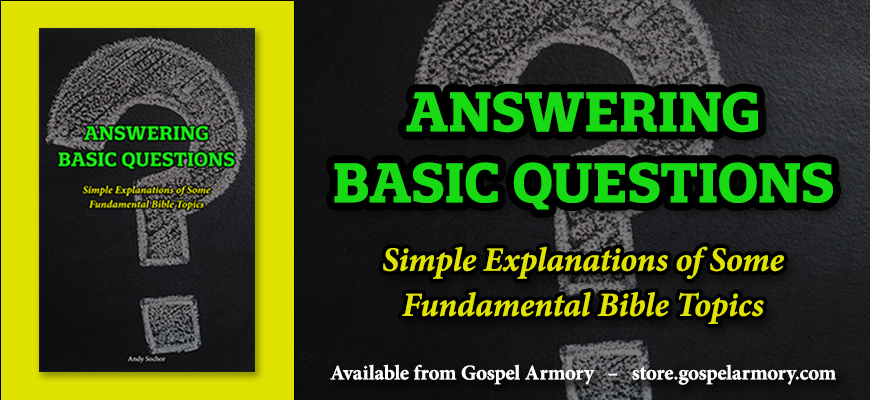
Paul instructed women to “adorn themselves in modest apparel” (1 Timothy 2:9). While this teaching was directed to women, we need to recognize that the need to dress modestly also applies to men. In the previous verse, instructions were given to men about prayer. Can women also pray? Of course, they ought to; but it is particularly important for men to heed these instructions about prayer since they have a more public role in lifting up prayers. So the instruction here regarding prayer is directed to the men. In the same way, the teaching about the need to dress modestly is addressed to women. This is not because men do not have a responsibility to heed this command, but because women are noticed more for their modesty (or in particular, their lack thereof). So both men and women are expected to dress in “modest apparel.”
But what constitutes modest apparel? How do we know what clothing is modest and what is not? Some believe it is relative to our culture. They think that clothing is only “immodest” if it is viewed that way by society. But we need to remember that in all things our standard is not the world, it is the word of God. It would be unreasonable for God to demand His people to dress modestly but not show us what is proper. Therefore, we know we can look to His word to find the answer.
There are several passages in the Old Testament that help provide God’s definition of what He considers modest. Some may point out that we are under the New Testament today and, therefore, cannot go to the Old Testament to show what modest apparel is. It is certainly true that we are under a new law and the Old Testament is not law for us today (Hebrews 8:7-13). But we are not appealing to the Old Testament for our law, but for definitions. Our law – the New Testament – states that we are to dress modestly. We are expected to do that since it is part of the new covenant. But what God considers “modest” or “naked” is not outlined in the new covenant. Does that mean we can invent our own definitions for these terms? Or course not. God has defined those terms for us. The fact that the definitions are found in the Old Testament is irrelevant. God’s law has changed but our bodies have not. Therefore, what God considered naked in Genesis is what He considers naked today. So we will look to the word of God to help us see what “modest apparel” really is.
Following creation and before the introduction of sin into the world, Adam and Eve “were both naked and were not ashamed” (Genesis 2:25). When we come to Genesis 3, things changed because sin entered into the world. Satan came to Eve in the form of a serpent and tempted her to eat of the one tree that God commanded them not to eat – the “tree of the knowledge of good and evil” (Genesis 2:17). Satan even told Eve that when she ate of it, she would “be like God, knowing good and evil” (Genesis 3:5). This is exactly what would happen. Eating of the fruit of this tree would cause them to know what was good and what was evil.
After both Adam and Eve ate of the tree of the knowledge of good and evil, the Scripture says, “Then the eyes of both of them were opened, and they knew that they were naked” (Genesis 3:7). In an attempt to remedy this situation, they “sewed fig leaves together and made themselves loin coverings” (Genesis 3:7). After making these loin coverings “they heard the sound of the Lord God walking in the garden in the cool of the day, and the man and his wife hid themselves from the presence of the Lord God among the trees of the garden” (Genesis 3:8). The Lord called to Adam (Genesis 3:9) and Adam explained why he and Eve hid themselves: “I heard the sound of You in the garden, and I was afraid because I was naked; so I hid myself” (Genesis 3:10). Despite the “loin coverings,” Adam and Eve were still “naked.”
The Lord then asked Adam: “Who told you that you were naked? Have you eaten from the tree of which I commanded you not to eat?” (Genesis 3:11). God knew where they acquired the knowledge of what constituted nakedness. That is clear from the way He asked this question. They ate of the tree of the knowledge of good and evil. This knowledge of good and evil would include knowledge of proper/improper coverings. With their newfound knowledge, they understood that being partially clothed was still to be considered naked.
After confronting Adam, Eve, and the serpent, the Lord “made garments of skin for Adam and his wife, and clothed them” (Genesis 3:21). God provided proper clothing so that Adam and Eve were no longer naked. But what exactly were these garments? What parts of their bodies did God cover so that they would no longer be naked? According to Strong’s Dictionary, the Hebrew word means a garment that went from the shoulders on down. God covered their chests and backs. After doing this, they were “clothed” and no longer “naked.” But how far below the waist needed to be covered? To the ankle? The knee? Halfway down the thigh? Let us look at other passages that will help us determine this.
In God’s instructions regarding the clothing for the priests, He said “You shall make for them linen breeches to cover their bare flesh (nakedness, KJV); they shall reach from the loins even to the thighs” (Exodus 28:42). What was considered nakedness? Exposing the loins and/or the thighs. Another helpful passage is Isaiah 47:2-3. This passage says: “Remove your veil, strip off the skirt, uncover the leg (thigh, KJV), cross the rivers. Your nakedness will be uncovered, your shame also will be exposed.” When one’s thigh is uncovered, they are considered naked.
What do these passages teach us? If the chest, back, loins, or thighs are exposed, one is naked by God’s definition. In order to dress in “modest apparel” (1 Timothy 2:9), we need to be sure we cover those areas. We need to learn from Old Testament passages like these. The law of Christ instructs us to dress modestly. To define what God considers modest, we must look to the definitions (again, not law) given in the Old Testament. Human bodies have not changed since the creation. What was naked in Genesis is also naked today. So we must take these things into account as we consider how we dress. The way we dress should reflect one who is “making a claim to godliness” (1 Timothy 2:10).











Just curious but in reading Isaiah 47:2-3. This passage says: “Remove your veil, strip off the skirt, uncover the leg (thigh, KJV), cross the rivers. Your nakedness will be uncovered, your shame also will be exposed.” When one’s thigh is uncovered, they are considered naked. If the verse starts by saying remove your veil, this verse is used to define nakedness why is an uncovered head not considered nakedness in the church? curious how the distinction is made.
Abena, that’s a good question. The verse I referenced just before Isaiah 47:2-3 helps explain that. “You shall make for them linen breeches to cover their bare flesh (nakedness, KJV); they shall reach from the loins even to the thighs” (Exodus 28:42). Exodus 20:26 makes the same point. Exposing the thigh was considered nakedness.